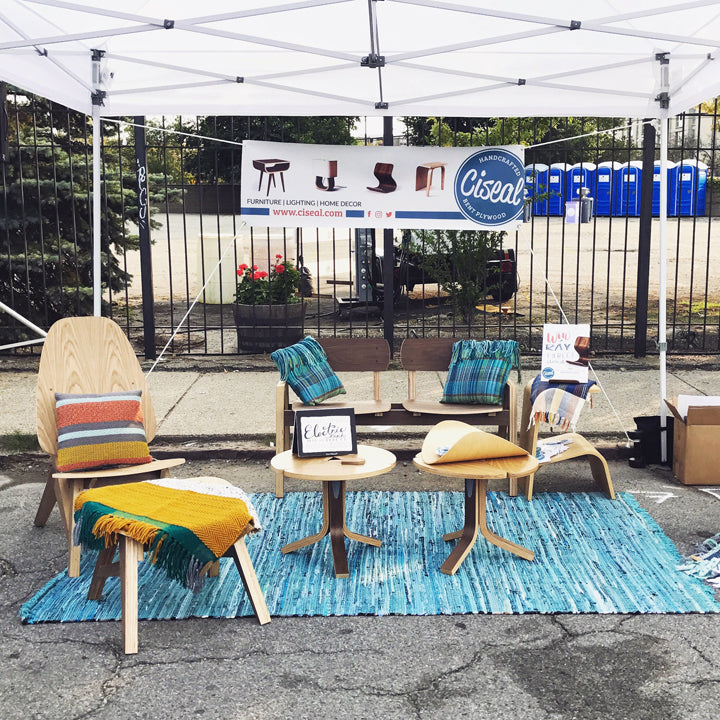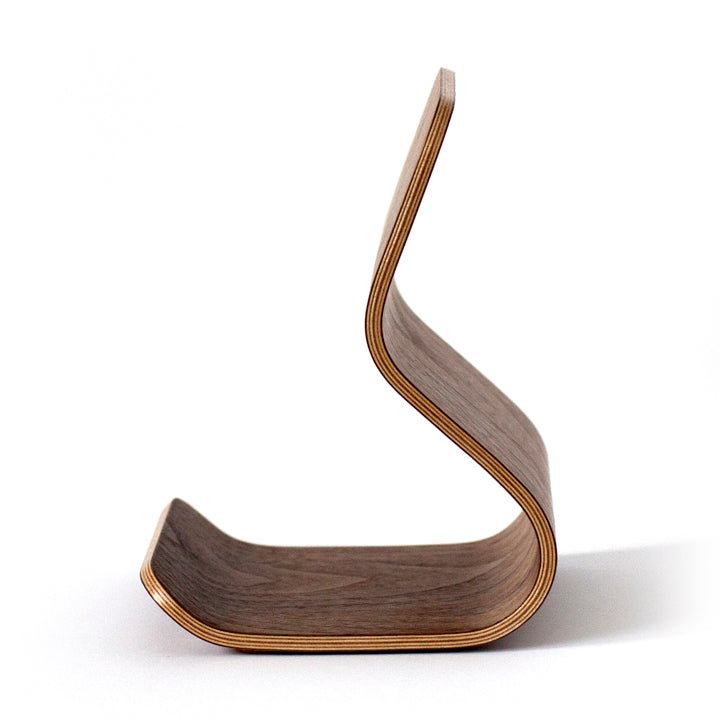The Ciseal Blog

Black Friday? Why We Should Be Supporting Green Friday Instead
This Black Friday, let's focus on helping the planet by making more intentional and sustainable choices.

Photo by Thirdman
Over-consumption is one of the most pressing challenges facing our planet today. Decades of data have made it clear that human behavior is directly linked to climate change. Acknowledging the climate emergency as the defining issue of our time, its up to each of us to take meaningful action. Fortunately, there are plenty of ways for each and every one of us to keep our consumption in-check.
This Black Friday, while countless companies battle to offer the lowest prices, I urge you to pause and reflect. If you choose to shop today, prioritize thoughtful, intentional purchases. Opt for high-quality, handcrafted products made to last, and support independent businesses whose values align with a sustainable future.
Our planet's resources are finite, and there's no "Planet B." This Black Friday, let's slow down, consume less, and make better choices for the environment.
Why Ciseal Doesn't Compete in the Black Friday Price Race
As a design-led, sustainability-focused brand, I believe in forging a different path. For me, it's not about being the cheapest - it's about doing what's right.
Every day, I craft products that defy throwaway culture and that stand the test of time. My designs are handcrafted with intention, combining timeless aesthetics with the highest standards of quality.
I refuse to compromise. No harsh chemicals, no shortcuts, and no dumpsters of wasteful offcuts - just innovation, passion, and a commitment to sustainability. Every choice I make is rooted in the belief that better decisions today can shape a better tomorrow.
This Black Friday, let's make a path for a more mindful, sustainable future together.

Photo by Tim Meyer on Unsplash
Ciseal Focuses Instead On...
QUALITY
Every detail matters. I pour tremendous thought and effort into perfecting every curve until it is just right. I'm continuously looking for opportunities to improve both quality and sustainablity - like by transitioning to using only sustainably-harvested hardwood veneer that's grown in the upper midwest for the core layers of every product. Creating tomorrow's heirlooms, I'm dedicated to crafting pieces that are made from durable materials so they can be cherished for a lifetime. True design excellence demands time, skill, and unwavering dedication - qualities that make Ciseal products timeless investments.
SUSTAINABILITY
My choices prioritize what's best for people, the planet, and my business. Guided by a passion for eco-conscious design, I work to ensure my processes and materials honor and protect the natural world - the very source of my inspiration. From the materials I work with to the products I package them in for shipping, sustainability isn't just a buzz word; it's the foundation of everything I do.
LEARN MORE ABOUT CISEAL'S CORE VALUES

Photo by Noah Buscher on Unsplash

2017 Renegade Craft Fair Detroit Recap
We had an absolutely lovely time at this past weekend’s Renegade Craft Fair at Detroit’s Eastern Market. It was a rare sunny and hot September weekend in Detroit, and the crowds were happy to soak up the sun while perusing the handmade goods. From the unique, handmade vendors to the delicious food trucks and the super amazing DJ, the fair was a wonderful time!
The feedback we got on our brand new furniture was great! I had just finished the bench, lounge chair, ottoman, and cocktail tables the night before, so I was excited to see what everyone thought of them. It was an overwhelming positive response! People would consistently catch a glance of our booth and be drawn by their delighted eyes directly over for a better look. The comments of “absolutely gorgeous,” “so unique,” and “I’ve never seen anything like it” were music to my ears all weekend. I may make a few tweaks to the new designs, but they will be in the shop soon. Be sure to sign up for our email newsletter to be the first to know when they’re released.

Photo: Renegade Craft Fair
Our display of furniture was brought to life by Electric Pink Crafts’ bright and beautiful pillows, blankets, and rugs. Thank you so much, Julia, for creating some gorgeous textiles and letting us borrow them for the fair! Be sure to check out Julia’s shop - her textile designs are perfect complements to our furniture.
It was a wonderful fair overall. I loved meeting some of our Instagram fans and talking with people who learned of us for the first time at the fair. Thank you to everyone who came out! And a big thank you Dan & Jen for all of your help preparing for the fair and helping to man the booth!

Lessons From STEM to STEAM: Why STEAM is the Path to an Awesome Future
I wrote previously (My Journey From STEM to STEAM) about my past in engineering and how learning Industrial Design has changed my perspective on product development for the better. I talked about how important it is to include Art and Design in our increasingly technology-focused education system. Having both parts of the product development process under my belt now, here are three lessons I’ve learned for why STEAM is the path to a more wholistic future:
Find the right questions in order to fully understand the task at hand.

The difference between my engineering education and design education was in how success was achieved: Success in engineering school depended on memorization and repetition of “what to know” and “what to think." Success in design school depended on critical thinking and creative interpretation to discover “how to know” and “how to think.” That ability to think critically and creatively interpret situations is the key to our new technology-driven economy. Critical thinking is how we discover the root problem that needs solving. Creative interpretation allows us to see new ways of using our knowledge of how things are to imagine new possibilities for how things could be.
Develop a solution that appeals to our emotions.


McMansion Photo: McMansionHell.com
What happens when you strip all form from your values and just focus on function? We’ve all seen the bland, soul-sucking Soviet apartment developments of the Cold War. Nobody deserves a life so void of beauty. On the other hand, what happens when you strip all function and durability from your values and focus exclusively on form? I give you McMansions - ginormous homes built in the US during the real estate boom which consist of questionable material quality and all of the “house” design elements ever imagined literally stuck onto the front of the building. There is obviously a need for both imagination and prudence to create appealing, functional, and progressive products, which leads into the third lesson.
Collaborate to bring to life beautiful and durable solutions that improve our lives.

This is where both the engineers and the artists need to get their hands dirty. Together. STEM is certainly valuable, but when we place too much importance on these fields, it creates a rift between the “implementers” (STEM people) and the “designers” (Art people). I saw this rift first-hand throughout my engineering career. Some engineers will tell you that they don’t have an artistic bone in their body. They don’t understand why designers fuss about shape, color, material, and proportion so much when those things don't serve a real purpose. On the other hand, some designers will claim that they can't possibly understand the complexities of engineering a product. They are happy to drop off a thoroughly impossible design on an engineer’s desk and tell her to make it work. They have no idea what it will take to bring this product to life, and then get angry when engineering changes their design beyond recognition. We would all be better off if more implementers had (or at least appreciated) the creativity, imagination, and empathy that comes from learning to create art. And likewise, if designers approached their work with the practicality, knowledge, and prudence that comes from learning how things work.

Our innate talents and interests are unique to each one of us. It’s a shame that children like me who have artistic talents are being led to believe that they have to leave their eccentricities behind in order to get a “real job” in science or technology. On the flip side, it’s no less shameful for kids interested in science and technology to see their achievements limited because their education only included what’s safe, familiar, and known. Perhaps by adding the “A” (Art) to STEM curriculums, the technology leaders of tomorrow will have a deeper appreciation for finding the right questions, developing emotionally appealing solutions, and collaborating to bring to life products that improve lives. That would truly be an awesome future!

Atomic Ranch's Modern Makers: The Handmade Layers of Ciseal's Nicole Hodsdon
Thank you to Jolene of Atomic Ranch Magazine for including me in their Modern Makers blog series! Jolene crafted a very cool story, and I'm honored to be among the women they're profiling for Women's History Month. If you're curious about what inspires me or what goes into the products I make be sure to check it out.

My Journey from STEM to STEAM: Why The Arts are Even More Relevant in a Technology-Driven Economy
If you’ve read past articles in this blog, you’ll know that I sometimes reveal hints of a past life in engineering. It’s true - I spent almost 10 years studying and practicing mechanical engineering. Today, I like to think of myself as a reformed engineer - one who has gone from a complete lack of knowledge about the creative arts to fully embracing the important role art and design have in a technology-driven economy.

My path in engineering started, like most careers nowadays, back in high school. Influenced by the STEM (Science, Technology, Engineering, Math) education movement, the college prep program I attended focused on the liberal arts and sciences while only offering one introductory semester in the creative arts. Being a girl who had a talent for and an interest in math and science, engineering was a natural choice.

Once in college, courses like thermodynamics and machine design left me wondering, “Where's the beauty?” I was learning a lot about how to make things work well and last a long time, but I constantly came back to the desire to learn what it would take to tackle product development in more elegant and sustainable ways. Even after graduating and joining the workforce, I kept asking myself where the human element and the innovation were.

Remembering that I once really enjoyed art classes when they fit into the curriculum, I decided to start taking drawing classes at night to spark that creative side once again. Through these classes, I came across the field of Industrial Design, which would begin to open my eyes to a more wholistic approach to product development. Industrial Design is the first stage of developing a product - from defining the problem to designing how the product will look and feel. Traditionally, products start in Industrial Design to get designed and then get handed off to Engineering to be manufactured.
What I’ve learned from studying and practicing both Engineering and Industrial Design is this: When you ask the right questions and keep in mind the human element to your solution, you can create a product that exponentially improves life by creating a bit of joy with every use. Think about the products you love - not only do they do their job, but they’re beautiful and they have an intention behind every detail that makes using them a joy.

Now, not every engineer needs to become an industrial designer. There are certainly outstanding benefits to an in-depth technical education, and we can all see the amazing advances made as a result of a focus on STEM subjects. What would be beneficial is if our STEM curriculums fostered a mindset of appreciation and collaboration between all of the fields important to a thriving technology-driven economy: Science, Technology, Engineering, Art, and Math (STEAM).

In the end, creating opportunities for Art and Design to be included in STEM programs - for STEM to become STEAM - results in more beautiful, useful products that make our lives easier and more joyful. Wouldn’t it be cool if more of the products we used everyday sparked a bit of joy and put a smile on our face every time we used them?
If you liked this article, be sure to read my follow up: Lessons from STEM to STEAM: Why STEAM is the Path to an Awesome Future.
Creating handmade products that are beautiful and useful are my mission with Ciseal. I like to think that each of my products make life more enjoyable and spark little joy-filled smiles throughout the day. If you're feeling the need for more smiles, feel free to check out Ciseal's current collection.

Why Bent Plywood?
I get asked all the time how I got started in hand crafting bent plywood furniture and what's my inspiration, so here's some of the story:
Born and raised in the suburbs just north of Detroit, there wasn't a big emphasis on art or design. They were subjects I enjoyed in school, but I felt a huge push towards pursuing a career in math or science. Therefore, engineering was my first pursuit.

Fortunately, through my job at the GM Technical Center in Warren, MI, I was introduced to the simple, understated beauty of mid century modern architecture and design. I was always the one who volunteered to represent engineering in meetings at the design center - not only did I get to experience the beautiful design center lobby with its gorgeous suspended stairs that lead up to the studios, but it was my chance to pick designers brains on how they got to where they are. I have since come to learn about the history and intent of the campus’ design and it is definitely the spark that led me in the direction of becoming a designer (Dwell magazine has a great little article on the design of the GM Technical Center here).
While at GM I enrolled at The College for Creative Studies in Detroit, and it only took about one semester of juggling work and school for me to realize that pursuing design full time was my next step. With the freedom to focus just on school, I was able to explore classes beyond my product design major. My junior year I took a furniture class that focused on bent plywood, and I was hooked. I loved the process of designing and hand making durable, functional products from what was previously flimsy, bendy wood.
After graduating from CCS, I started making the Ray tablet stand and other bent plywood things in my spare time. It eventually grew from a fun hobby making dust in my parents cluttered basement to a legitimate business with happy paying customers.

Modern classics of the Mid-Century and Danish Modern designers like Charles & Ray Eames, Eero Saarinen, Florence Knoll, Harry Bertoia, Arne Jacobson, and George Nelson are the biggest influences of my designs. They inspire me with their nods toward nature, respect for materials and clean, unadorned designs that are both functional and beautiful.
For each piece I make, I build a form by hand, cut out individual layers of material, then carefully apply glue to each layer, clamp the layers to the form, trim, sand and rub on the finish. Each piece takes days to complete. It’s definitely faster and cheaper for huge manufacturers to mass-produce molded plywood products on robotic assembly lines half a world away, but their products lack a certain soul. There’s an attention to detail, a love of material, a passion for perfection that is evident in a handmade Ciseal product. My furniture and accessories are designed to be used, loved, and enjoyed every day - hopefully for years to come. Nothing is more beautiful than a bent plywood piece that shows through its nicks, scratches, and worn veneer that it's been loved for a lifetime.

Check out what's resulted from this journey: Ciseal's Collection
If you'd like to follow along on the rest of this adventure, feel free to sign up for our email newsletter

Thank You, Detroit News!
Thank you, Maureen and The Detroit News for this lovely article:
Designed in Detroit: former engineers, natives flock to area

It's a pleasure to be included with the likes of Hunt & Noyer, Alex Drew & No One, The Detroit Wallpaper Company, Eclecticasa, The Endgrain Woodworking Co., and LeadHead Glass. All of which are great inspirations to what I do at Ciseal.


